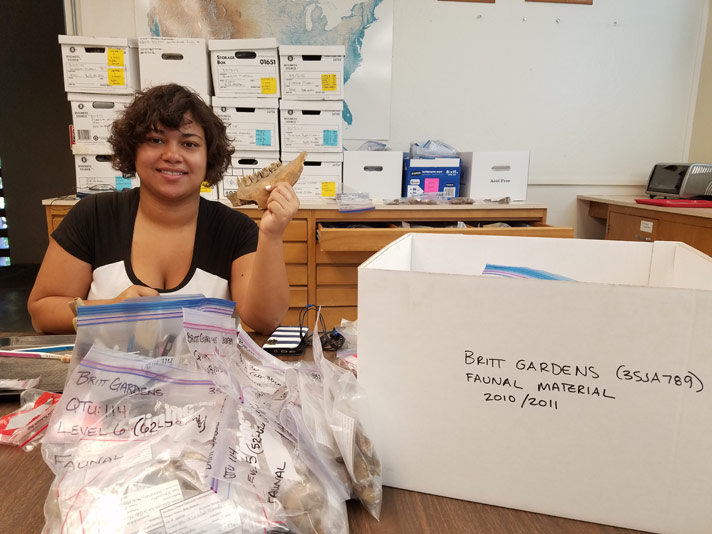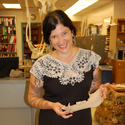Digging Jacksonville – August 2017
As part of Jacksonville’s 2010 Sesquicentennial celebration, the Southern Oregon University Laboratory of Anthropology (SOULA) conducted a large-scale archaeological excavation at the former homestead of Peter Britt, which is now the Peter Britt Gardens and Britt Festival grounds. Due to the volume of archaeological material recovered from the project, paired with a lack of funding, the faunal analysis (i.e. the study of the animal remains recovered from the site) has not yet been completed.
As a McNair scholar, I had the opportunity to do a summer internship with SOULA and help with this research. My plan is to clean, organize, and catalog those faunal remains recovered from the 2010 dig, so that I can help Katie Johnson (SOULA’s Faunal Expert) use the bones to determine what the Britt family was eating, and compare that with the information from the Chinese Quarter dig.
In the two weeks that I have been working with SOULA, I have already learned so much about animal bones. This includes the difference between Taxa—such as mammal or bird—and how to identify them. I have not yet learned all of the vocabulary that comes with describing where exactly the bone fragments lay on the body of the animal, but that is something I am spending my time both inside and outside of the lab learning about.
To do this, I have researched a multitude of books and journal articles related to historic butchery techniques and the identification of faunal remains. This information is helpful because the sources have much information based on the different effects that weather, people, and other animals can have on historic bones and how they age over time. Most of the sources also have pictures of different impacts or traits, so that I can easily visualize the difference when I come across them.
In addition to learning about the physical difference between the skeletons, I have also started learning about the differences in butchering cuts. Before walking into this internship, I had the knowledge that hand sawn and machine-cut bones had different markings. However, I had never seen the difference before. So far I have learned that hand-sawn bones have marks that vary in depth as well as angle. These marks are also very easy to see, whereas a bone that is machine-cut is very smooth, and leaves uniform marks against the cut edge.
Hopefully, once the analysis of the Peter Britt site is completed, we can compare the diets between the Britt family and their Chinese neighbors. This analysis, however, will take longer than the eight weeks I am working with SOULA this summer. Therefore, I am hoping to continue this research in the fall and focus on it for my senior thesis. I look forward to learning more about these faunal remains and how much they can tell us about Peter Britt and his family.
Jacie Shepherd will be a senior at SOU next year, finishing her degree in Sociology and Anthropology. She has an interest in Biological anthropology, as well as forensics, and plans on attending graduate school to receive both a Master’s and Doctorate in Anthropology. You can reach SOULA by contacting Chelsea Rose at rosec@sou.edu and follow SOULA on facebook/Southern Oregon University Laboratory of Anthropology

 Chelsea Rose is an historical archaeologist who specializes in the settlement and development of the American West. Chelsea and the Southern Oregon University Laboratory of Anthropology (SOULA) conduct archaeology across Oregon and have done several projects in Jacksonville. You can reach Chelsea at rosec@sou.edu and follow SOULA on
Chelsea Rose is an historical archaeologist who specializes in the settlement and development of the American West. Chelsea and the Southern Oregon University Laboratory of Anthropology (SOULA) conduct archaeology across Oregon and have done several projects in Jacksonville. You can reach Chelsea at rosec@sou.edu and follow SOULA on